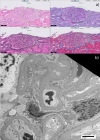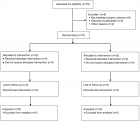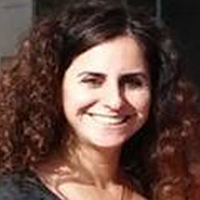Abstract
Research Article
Natural ferromagnetic resonance in cast microwires and its application to the safety control of infrastructures
Serghei Alexei Baranov*, E Adar and AM Yosher
Published: 31 July, 2020 | Volume 3 - Issue 1 | Pages: 118-122
The natural ferromagnetic resonance (NFMR) in cast glass-coated amorphous magnetic microwires has been studied theoretically and experimentally. The NFMR reveals large residual stresses appearing in the microwire core in the course of casting. These stresses, together with the magnetostriction, deteRmine the magnetoelastic anisotropy. Beside the residual internal stresses, the NFMR frequency is influenced by external stresses applied to the microwire or to the composite containing the latter (the so-called stress effect).
The dependence of the NFMR frequency on the deformation of the microwires is proposed to be used in the distant diagnostics of dangerous deformations of critical infrastructure objects such as bridges, dams, wind turbine towers, skyscrapers, stack-furnaces, embankments, etc. To this end, fragments of magnetic microwires will be embedded in the bulk of concrete structures or fixed on their surface during construction or after it by means of coating with a special concrete-adhesive plaster. Further, these structures are periodically irradiated with microwaves from a radar at frequencies close to the original NFMR, and the presence of latent dangerous deformations of the concrete structure is judged by the NFMR frequency shift.
Read Full Article HTML DOI: 10.29328/journal.ijpra.1001028 Cite this Article Read Full Article PDF
Keywords:
Cast glass-coated amorphous magnetic microwire; Magnetostriction; Natural ferromagnetic resonance; Distant safety control
References
- Taylor GF. A metod of drawing metallic filaments and a discussion of their properties and users. Phys Rev. 1924; 23: 655-660.
- Vázquez M. Soft magnetic wires, Physica B: Condensed Matter. 2001; 299: 302-313.
- Vazquez M, Zhukov AP. Magnetic properties of glass-coated amorphous and nanocrystalline microwires. J Magn Magn Mat. 1996; 160: 223-228.
- Baranov SA, Larin VS, ToRcunov AV. Technology, preparation and properties of the cast glass-coated magnetic microwires. Crystals. 2017; 136: 1-12.
- Antonov AS, Borisov VT, Borisov OV, Prokoshin AF, Usov NA. Residual quenching stresses in glass-coated amorphous ferromagnetic microwires. J Phys D Appl Phys. 2000; 33: 1161-1168.
- Baranov SA. Use of a microconductor with natural ferromagnetic resonance for radio-absorbing materials Tech. Phys. Lett. 24, 1998, 549-550.
- Baranov SA, Yamaguchi M, GaRcia KL, Vazquez M. Dimensional absorption high-frequency properties of the cast glass coated microwires. Surf Engin Appl Electrochem. 2008; 44: 425 -427.
- Baranov SA. Engineering microwave properties of microwires. Moldavian J Phys Sci. 2015; 14: 201-214.
- Marín P, Cortina D, Hernando A. High-frequency behavior of amorphous microwires and its applications. J Magn Magn Mater. 2005; 290–291, 2005, 1597-1600.
- Peng HX, Qin F, Phan MH. in Ferromagnetic microwires composites: from sensors to microwave applications. Springer. Switzerland 2016; 12-14.
- Qin F, Peng HX. Ferromagnetic microwires enabled multifunctional composite materials. Progr Mater Sci. 2013; 58: 183-259.
- Kraus L, Infante G, Frait Z, Vázquez M. Ferromagnetic resonance in microwires and nanowires. Phys Rev B. 2011; 83: 1-11.
- Kraus L. Theory of ferromagnetic resonances in thin wires. Czech J Phys. 1982; 32: 1264-1282.
- Reynet O, Adenot AL, Deprot S, Acher O, Latrach M. Effect of the magnetic properties of the inclusions on the high-frequency dielectric response of diluted composites. Phys Rev B. 2002; 66: 1-9.
- Starostenko SN, Rozanov KN, Osipov AV. Microwave properties of composites with glass coated amorphous magnetic microwires. J Magn Magn Mater. 2006; 298: 56-64.
- Yıldız F, Rameev BZ, Tarapov SI, Tagirov LR, Aktaş B. High-frequency magnetoresonance absorption in amorphous magnetic microwires. J Magn Magn Mater. 2002; 247: 222-229.
- Ménard D, Britel M, Ciureanu P, Yelon A. Giant magnetoimpedance in a cylindrical magnetic conductor. J Appl Phys. 1998; 84: 2805-2814.
- Ménard D, Yelon A. Theory of longitudinal magnetoimpedance in wires. J Appl Phys. 2000; 88: 379-393.
- Nematov MG, Adam AM, Panina LV, Yudanov NA, Dzhumazoda A, et al. Magnetic anisotropy and stress-magnetoimpedance (S-MI) in current-annealed Corich glass-coated microwires with positive magnetostriction. J Magn Magn Mater. 2019; 474: 296-312.
- Baranov SA. Generalized conductivity and optimum energy release. Tech Phys. 1999; 44: 853-854.
- Born M, Wolf E. In Principles of Optics: Electromagnetic Theory of Propagation. Interference and Diffraction of Light, Pergamon Press, Oxford. 1970; 30.
- Makhnovskiy D, Zhukov A, Zhukova V, Gonzalez J. Tunable and self-sensing microwave composite materials incorporating ferromagnetic microwires. Adv Sci Technol. 2008; 54: 201-210.
Figures:
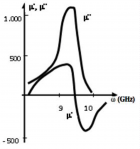
Figure 1

Figure 2
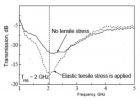
Figure 3
Similar Articles
-
Natural ferromagnetic resonance in cast microwires and its application to the safety control of infrastructuresSerghei Alexei Baranov*,E Adar,AM Yosher. Natural ferromagnetic resonance in cast microwires and its application to the safety control of infrastructures. . 2020 doi: 10.29328/journal.ijpra.1001028; 3: 118-122
Recently Viewed
-
Sensitivity and Intertextile variance of amylase paper for saliva detectionAlexander Lotozynski*. Sensitivity and Intertextile variance of amylase paper for saliva detection. J Forensic Sci Res. 2020: doi: 10.29328/journal.jfsr.1001017; 4: 001-003
-
Extraction of DNA from face mask recovered from a kidnapping sceneBassey Nsor*,Inuwa HM. Extraction of DNA from face mask recovered from a kidnapping scene. J Forensic Sci Res. 2022: doi: 10.29328/journal.jfsr.1001029; 6: 001-005
-
The Ketogenic Diet: The Ke(y) - to Success? A Review of Weight Loss, Lipids, and Cardiovascular RiskAngela H Boal*, Christina Kanonidou. The Ketogenic Diet: The Ke(y) - to Success? A Review of Weight Loss, Lipids, and Cardiovascular Risk. J Cardiol Cardiovasc Med. 2024: doi: 10.29328/journal.jccm.1001178; 9: 052-057
-
Could apple cider vinegar be used for health improvement and weight loss?Alexander V Sirotkin*. Could apple cider vinegar be used for health improvement and weight loss?. New Insights Obes Gene Beyond. 2021: doi: 10.29328/journal.niogb.1001016; 5: 014-016
-
Maximizing the Potential of Ketogenic Dieting as a Potent, Safe, Easy-to-Apply and Cost-Effective Anti-Cancer TherapySimeon Ikechukwu Egba*,Daniel Chigbo. Maximizing the Potential of Ketogenic Dieting as a Potent, Safe, Easy-to-Apply and Cost-Effective Anti-Cancer Therapy. Arch Cancer Sci Ther. 2025: doi: 10.29328/journal.acst.1001047; 9: 001-005
Most Viewed
-
Evaluation of Biostimulants Based on Recovered Protein Hydrolysates from Animal By-products as Plant Growth EnhancersH Pérez-Aguilar*, M Lacruz-Asaro, F Arán-Ais. Evaluation of Biostimulants Based on Recovered Protein Hydrolysates from Animal By-products as Plant Growth Enhancers. J Plant Sci Phytopathol. 2023 doi: 10.29328/journal.jpsp.1001104; 7: 042-047
-
Sinonasal Myxoma Extending into the Orbit in a 4-Year Old: A Case PresentationJulian A Purrinos*, Ramzi Younis. Sinonasal Myxoma Extending into the Orbit in a 4-Year Old: A Case Presentation. Arch Case Rep. 2024 doi: 10.29328/journal.acr.1001099; 8: 075-077
-
Feasibility study of magnetic sensing for detecting single-neuron action potentialsDenis Tonini,Kai Wu,Renata Saha,Jian-Ping Wang*. Feasibility study of magnetic sensing for detecting single-neuron action potentials. Ann Biomed Sci Eng. 2022 doi: 10.29328/journal.abse.1001018; 6: 019-029
-
Pediatric Dysgerminoma: Unveiling a Rare Ovarian TumorFaten Limaiem*, Khalil Saffar, Ahmed Halouani. Pediatric Dysgerminoma: Unveiling a Rare Ovarian Tumor. Arch Case Rep. 2024 doi: 10.29328/journal.acr.1001087; 8: 010-013
-
Physical activity can change the physiological and psychological circumstances during COVID-19 pandemic: A narrative reviewKhashayar Maroufi*. Physical activity can change the physiological and psychological circumstances during COVID-19 pandemic: A narrative review. J Sports Med Ther. 2021 doi: 10.29328/journal.jsmt.1001051; 6: 001-007

HSPI: We're glad you're here. Please click "create a new Query" if you are a new visitor to our website and need further information from us.
If you are already a member of our network and need to keep track of any developments regarding a question you have already submitted, click "take me to my Query."








